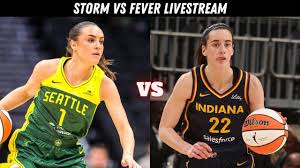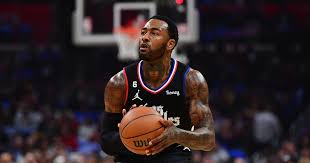
On a fast break, John Wall looked like light bending around a corner—one hard dribble, a blur of limbs, then a finish that sent camera shutters chattering like rain. For a decade, he embodied the archetype of the modern two-way point guard: a floor general who could pressure the rim, orchestrate for shooters, and hawk the ball at the point of attack. His career carried the arcs that define sports in America—meteoric rise, hard-won peak, cruel injury, reimagined self—ending, officially, with his retirement announcement in August 2025. The news prompted a full-court flashback: to Raleigh blacktops and Lexington roars, to D.C. spring nights when he and Bradley Beal seemed to have cracked the code for an entire franchise, and to the quieter, more difficult chapters that revealed Wall’s durability as a human being as much as a player.
This is the long story of Johnathan Hildred Wall Jr.—the player, the leader, and the person—told with the benefit of time, context, and the poise Wall earned through both triumph and trials.
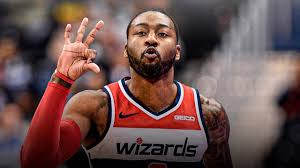
Origins: Raleigh Roots and the First Step
John Wall grew up in Raleigh, North Carolina, refining a game whose first signature was speed. That trait—kinetic, relentless, but increasingly under control as he matured—would define him at every level. His prep journey took him through Garner and then Word of God Christian Academy, where national ranking services began to peg him as the point guard of his class. At Word of God he learned to toggle gears: full throttle in the open court, then a patient pick-and-roll navigator when the half-court set demanded it. The state title runs and national camps were the runway; Kentucky would be the launch.
Kentucky: One Year, One Statement
When John Calipari arrived in Lexington, the Wildcats embraced the one-and-done model, and Wall became its first great pilot light. In 2009–10, he averaged star numbers, won every freshman honor within reach, and played with a charisma that made Rupp Arena feel smaller. He was SEC Player of the Year and a consensus first-team All-American, the live-wire engine of a roster thick with NBA futures. If his jumper wavered in form, the rest of his game left little debate about the future: he was a professional, and he was almost certainly going No.
Draft Night and the Washington Rebuild
The Washington Wizards took Wall first overall in 2010. What they drafted was not merely a stat line but a style of play that would come to shape their identity. Early Washington rosters were chaotic, young, and uneven; Wall’s job, impossible at times, was to make order of it. The turnovers came with the pace, but so did sparks of an elite processor at work: skip passes to corners, pocket feeds at angles that only appear for a blink, hit-ahead lasers to running wings. The Wizards asked him to be a franchise compass; over the next seven seasons, he became exactly that.
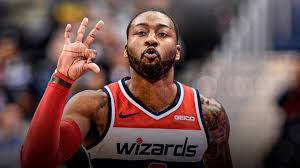
The Ascension: Five All-Star Trips and a City Reawakened
From 2013–14 through 2017–18, Wall made five straight All-Star teams and an All-NBA third team (2017). He drove the team to the line, collapsed defenses, and made D.C. playoff basketball feel routine again. In 2017, Washington snapped a 38-year drought by winning a division title, a milestone that, while symbolic, captured the restoration of pride at Capital One Arena. His best teams were balanced between Wall’s force and Bradley Beal’s shotmaking, with Otto Porter spacing, Marcin Gortat rolling, and a rotating cast of wings who could sprint to keep pace.
At peak, Wall averaged close to 20 points and nine assists per game for Washington, a production line that reflected both usage and polish. Advanced numbers were kind, but the eye test—especially in the postseason—was kinder: chasedown blocks that flipped possessions, full-court sprints that ended in two points or free throws, and those surges when a game felt tilted by one player’s tempo. Stat repositories will forever log his totals, but the truth is more visceral: when Washington got stops, every fan could feel what might happen next as No. 2 rebounded or received the outlet and shifted the building’s pulse.
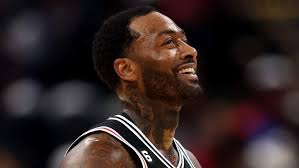
The Complete Point Guard: Tools and Tendencies
Transition Pressure. Few guards of his era applied consistent downhill pressure like Wall. His north-south game was elite, yet the defining evolution was how he learned to decelerate—snake a pick-and-roll; hang in the lane a beat longer; manipulate help with his eyes. The early-career speedster became a tempo-shifter, and it changed Washington’s late-game offense.
Passing Angles. Wall’s deliveries carried pace and purpose: left-hand sling passes to opposite-side shooters; lobs thrown early to beat weak-side rotations; pocket passes through seams. In an NBA defined by three-point volume, he created clean looks the way great quarterbacks “throw receivers open.”
Defense. Long arms, a strong chest, and instant acceleration let him switch onto wings in a pinch and jump passing lanes without gambling recklessly. At his best, he was an All-Defensive-caliber guard, honored with a second-team selection in 2015.
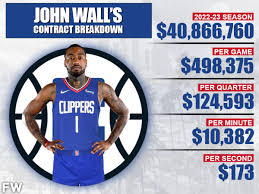
The Cost of Doing Business at Speed: Injuries and the 2019 Rupture
The very forces that made Wall special—explosion, torque, relentlessness—extract a toll. Knee procedures nudged their way into the narrative, and then came 2019: a heel issue, subsequent surgery, and a devastating ruptured left Achilles. No basketball fan needs a primer on what an Achilles tear can do to a guard’s career; for a player whose first step was a weapon, it cast a long shadow. The Wizards announced a 12-month recovery time; the timeline eventually stretched, carving out a two-year hole in his playing life.
The Trade, the Pause, and the West Coast Coda
In December 2020, Washington traded Wall to Houston in the headline swap for Russell Westbrook. He showed flashes with the Rockets in 2020–21, then sat out the 2021–22 season by mutual agreement as the franchise pivoted fully into a youth movement. In 2022, Wall signed with the Clippers, offering energy off the bench and glimpses of the old burst; a midseason three-team deal sent him back to Houston in February 2023, where he was subsequently waived. The box-score record closes with 2022–23; the competitor inside him did not.
The Announcement: “Retired, But Never Done”
On August 19, 2025, Wall announced his retirement after 11 NBA seasons. The coverage read like a career highlight reel with context: five All-Star appearances, one All-NBA team, and the indelible impression that at peak he was among the league’s most terrifying open-floor engines. The Wizards called him “a forever Wizard,” which fit; when the city thinks of its modern era, it sees Wall speeding down the right lane line, the number 2 streaking like punctuation at the rim. Wall himself framed the moment as a pivot, not an ending: “I gave this game everything I had,” a nod to future roles in mentorship, business, or the grassroots game that he’s never really left.
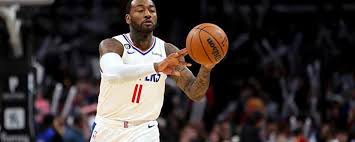
The Numbers, and What They Say
The career ledger is a tidy summary of a messy, beautiful career: 18.7 points, 8.9 assists, 4.2 rebounds, and 1.6 steals per game across 647 regular-season games. His Washington prime (2013–2018) skews those figures upward, as does his playoff profile—where usage rose, defenses loaded up, and still he found seams. Basketball-Reference renders his line with the clinical precision of a ledger; the memory renders a player whose value exceeded the entries, especially in a city that needed his showmanship as much as his production.
The Human Story: Loss, Vulnerability, and Resilience
In 2019, Wall’s mother, Frances Pulley, passed away after a fight with cancer. The loss reshaped his world as much as any injury. In 2022 he spoke publicly about experiencing suicidal ideation during the stretch that followed his Achilles rupture and his family bereavements; he found therapy, leaned on friends, and reframed the conversation for a generation of athletes taught to grind through everything silently. The candor mattered. It added dimension to the word “toughness” and made clear that leadership can look like vulnerability.
The empathy was not new. Years earlier, Wall had formed a bond with a six-year-old cancer patient named Miyah; the night she passed, he played with her name written on his shoes, broke down postgame on television, and sent the gear to her family. For D.C., moments like that fused the player and the city in a way that box scores never could.
Philanthropy as Platform: The John Wall Family Foundation
Wall’s foundation work—often directed toward youth, education, hunger relief, and rent assistance—expanded significantly during the COVID-19 pandemic. In Washington, he partnered on rental-relief efforts that met people where they lived, literally stabilizing households at a precarious time. The foundation’s programs extended beyond charity to mentorship—“Passport to Manhood” sessions with Boys & Girls Clubs, community conversations about opportunity, and a steady presence at local events that did not require cameras. It was consistent, specific, and personal—the best kind of athlete philanthropy.
Style Guide: What Coaches and Scouts Saw
First Step & Second Jump. The first step got the highlight packages, but scouts loved Wall’s second jump and recovery speed. Miss a layup? He was often the first back to contest. A pocket pass deflected? He beat most guards to the loose ball.
Screen Navigation. On defense, he could rear-view contest or stunt at the nail and still recover to his man; on offense, he learned to reject screens to shake defenders who pre-loaded to his right hand.
Read-Progression Passing. Wall didn’t just read the first helper; he learned to read the second and third. That’s how a drive becomes a corner three without ever forcing a skip through a defender’s frame.
End-Game Management. In Washington’s best seasons, late-game offense condensed to push-pull: Wall in the middle third, Beal flaring weak side, Porter spacing the slot, Gortat or later bigs setting drag screens in flow. The sequencing—drive, kick, re-screen, re-attack—was a coach’s dream when it hummed.
These traits, refined across years and contexts, made him the prototype for the “pressure point guard” in an era of five-out spacing and pace-and-space dictates.
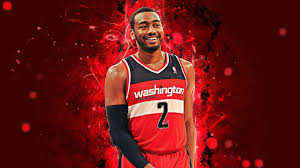
The 2017 Snapshot: Peak Wizards, Peak Wall
The discrete moment that many remember is the 2016–17 campaign, when Washington found rhythm under Scott Brooks, won the Southeast, and went toe-to-toe with Boston in a seven-game second-round series. Even separate from any one shot, that spring offered the purest version of Wall’s game: physically imposing without being reckless, emotionally charged without losing the plot. If the Wizards fell short of the conference finals, they nevertheless restored a standard—and a ceiling—that had felt abstract since the days of Gilbert Arenas.
Contracts, Context, and the Cap Sheet Conversation
No honest history of Wall’s career skips the contract discourse. The 2017 designated veteran extension recognized his standing as a top-10 player at his position and a franchise cornerstone. When the Achilles injury struck, the deal became a topic for cap analysts and talk shows; that conversation, while inevitable, often obscured the context. Teams don’t insure themselves against ruptured tendons of their best players, and cities rarely get to keep stars without paying their price. Wall’s agreement paid him for what he was and what he reasonably projected to be; fate intervened. The larger truth is that Washington’s best decade since the 1970s coincided with his prime.
Houston and L.A.: Reinvention Attempts
In Houston, surrounded by youth and flux, Wall was both a mentor and a microwave scorer. The 2020–21 Rockets were a team with more questions than answers—James Harden’s exit, injuries, experiments—and Wall’s value resided as much in habits as in highlights. The mutual sit-down for 2021–22 acknowledged timelines diverging: Houston needed developmental minutes; Wall needed to reset his body and market. The Clippers stint in 2022–23 showed flashes—a burst past a flat-footed big, a spray-out to a shooter—but the Pacific Division is unforgiving, and minutes compressed as L.A. sought lineups that maximized shooting around Kawhi Leonard and Paul George. A deadline deal sent him back to Houston, a waiver followed, and one of the game’s great accelerators eased to the curb.
Legacy in Washington: “Forever Wizard”
Franchises are defined by players who change their weather. For Washington, Wall did that. He brought relevance back to a building and a fan base, created thousands of made threes for teammates who’ll remember the passes as much as the points, and left a highlight reel that could be stitched entirely from chasedowns, pin-downs turned pocket passes, and one-hand dunks that scraped the back iron. The team’s public tribute after his retirement announcement—framing him as part of the franchise’s permanent story—felt less like courtesy and more like formal recognition of an obvious truth.
The What-If Game (Played Briefly)
What if the injuries don’t mount? What if the 2017 Wizards snag one more stop or one more shot against Boston? What if Washington finds the perfect two-way forward to fit around the Wall-Beal axis a year earlier? Sports fans hoard what-ifs because they’re protective of their joy; they want the version of events that keeps the magic going. But the absence of those futures shouldn’t obscure what Wall actually authored: a franchise revitalization, a five-year run among the best at his position, and a public example of perseverance through unimaginable personal pain.
Mentorship and the Future
Wall’s post-playing aspirations—hinted at in his retirement framing—feel like a natural extension of how he moved through the league’s later chapters. In Houston he mentored; in Los Angeles he slotted; in Washington he led. The grassroots game is flush with guards who can dribble two balls at once and step back to 27 feet; what it needs are mentors who can teach change-of-pace, defensive pride, and accountability in the unseen hours. If Wall puts his shoulder into that work, he’ll produce a different kind of assist: pros who know how to run a team, not just an action.
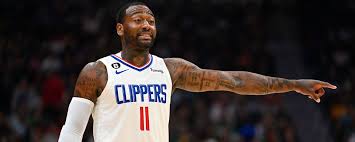
The Broader Conversation: Mental Health and Athlete Visibility
The evolution of athlete culture in the 2020s includes a widening aperture on mental health. Wall’s candid interviews and public acknowledgments of therapy showed how a superstar can model care without diminishing competitive edge. In doing so, he joined a cohort of players across sports pushing back against the stigma that had long haunted locker rooms. The message—ask for help, build a circle, speak honestly—carried added weight because it came from someone whose persona had been sculpted by force and speed. Vulnerability from a player like Wall did not undercut toughness; it redefined it.
Community Threads That Won’t Unravel
When media narratives cool, community work remains. D.C. partners attest that the John Wall Family Foundation didn’t parachute in and out; it showed up repeatedly, with checks and with time. The rental-relief collaborations during COVID were lifelines. Mentorship programming with Boys & Girls Clubs was investment, not merely donation. Those relationships outlast news cycles and ensure that the player’s name means something beyond a jersey in a shadow-box. The most telling detail is that so much of this work long predated the retirement announcement.
How We’ll Remember the Game
The Push. Rebound. Outlet. Two dribbles to the hash. Wall’s shoulders lower; defenders backpedal like lifeguards, churning water. He doesn’t need a screen; he is the advantage.
The Slalom. In pick-and-roll, he’s not merely turning a corner; he’s tracing a slalom line between two bodies, pausing just enough to freeze the weak-side tagger, then flipping a lob into a space you didn’t realize existed.
The Chase. Turnover, the other way. A head start shouldn’t matter, but with Wall it often didn’t; he solo-sprinted opponents down, pinned layups, and turned two points against into two points for.
The Look. Teammates knew the look: eyes up before the dribble settled, a hand twitch at his hip like the signal to cut now, now, now.
Context in the Era
Wall’s prime overlapped with the point-guard renaissance: Stephen Curry’s revolution, Chris Paul’s mid-range craftsmanship, Russell Westbrook’s triple-double storms, Damian Lillard’s logo heat checks, and Kyle Lowry’s winning micro-edges. In that crowded firmament, Wall carved a lane—less spacing than Golden State, fewer shooters than Houston, smaller markets of attention than coastal glamour teams—and still earned top billing. His All-NBA nod in 2017 and five All-Star berths weren’t participation trophies; they were confirmations that his ceiling was championship-caliber with the right cast.
Epilogue: The Day the Blur Stopped
Retirement days are oddly still. For a player who moved faster than most, the stillness can sound loud. But Wall’s final box score is not the last word—because careers that matter leave echoes. They ring in the voices of kids who mimicked his windmill in driveways, in the coaches who cue “pace and poise” with his film spliced into teaching decks, and in the Washington fans who still stand when a guard pushes after a turnover because that was the Pavlovian joy he taught them. On paper, his career reads as 11 seasons and the cruel arithmetic of injuries. In memory, it’s an accelerant: the player who turned rebounds into breaks, doubt into defiance, and city winters into springs.
When he said goodbye, he also implied a next act. The court may go dim, but the work remains—mentors to recruit, programs to seed, players to shape, communities to serve. “Retired, but never done,” as the headlines summarized, is both tagline and testament. Speed fades; substance lingers. For John Wall, there was always both.
Key Career Milestones and References
- Retirement announced (Aug. 19, 2025); five-time All-Star; “forever Wizard.”
- Career overview and transactions (Wizards → Rockets → Clippers → Rockets/waived).
- Career stats and bio basics (DOB, height, college, averages).
- 2019 Achilles rupture and recovery timeline.
- 2017 division title context.
- Foundation & community work (rental relief; Boys & Girls Clubs; community storytelling).
- Mental health advocacy and public statements
